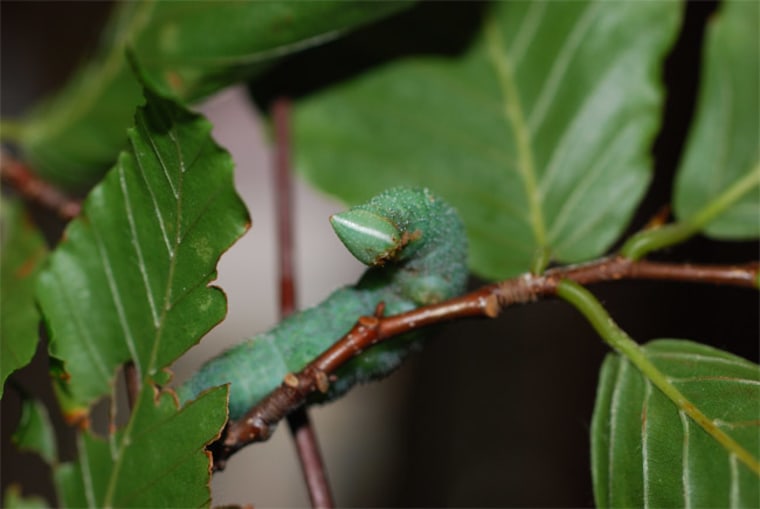Caterpillars apparently can whistle, letting out squeaks that can fend off attacking birds, scientists have now found.
They don't whistle by puckering their lips and blowing, since they don't have lips. Instead, they blow out their sides, researchers said.
Scientists have known for more than 100 years that many caterpillars can generate clicking or squeaking noises. However, researchers have only recently begun to experimentally investigate how these noises are made and what roles they might play.
Neuroethologist Jayne Yack at Carleton University in Ottawa had shown that silk-moth caterpillars () make clicking sounds by snapping their mandibles together. Now she and her colleagues for the first time have revealed that walnut sphinx caterpillars (Amorpha juglandis) can toot from their sides.
Using high-speed video, the researchers noticed they pulled their heads back to compress the body cavity while they whistled. Unlike reptiles, birds and mammals, insects don't breathe using their mouths, but with holes in their sides known as spiracles, and the scientists reasoned they were forcing air out these holes to whistle, generating squeaking noises.
To confirm their idea, researcher Veronica Bura at Carleton University gently applied latex over all eight pairs of the caterpillars' abdominal spiracles and then uncovered each pair systematically while pinching the larva. The whistles definitely came from the eighth pair, generating trains of whistles lasting up to four seconds each, and spanning frequencies that ranged from those audible to birds and humans up to ultrasound.
Silk-moth caterpillars make clicks to warn predators that they would make nasty meals, so why do walnut sphinx caterpillars whistle? To find out, Yack and Bura teamed up with researchers at Queen's University in Kingston, Canada, who studied captive yellow warblers (Dendroica petechia), a bird that is known to frequently eat caterpillars and lives where the walnut sphinx caterpillar does.
The scientists put walnut sphinx caterpillars on twigs in cages with yellow warblers and patiently filmed the encounter. Surprisingly, when the birds attacked, the caterpillars whistled and the bird typically flinched and hopped or flew away. In tests with three warblers and two attacks each, the caterpillars got away completely unscathed. [Video of the whistling caterpillar]
"These birds are clearly startled by the unexpected sounds coming out of this caterpillar," Yack told LiveScience. "They dove for cover."
The sounds are probably not advertising that the walnut sphinx caterpillars are distasteful. The birds simply appear to be startled, "because these sounds are unexpected," Yack said.
The scientists detailed their findings online Dec. 10 in the Journal of Experimental Biology.
